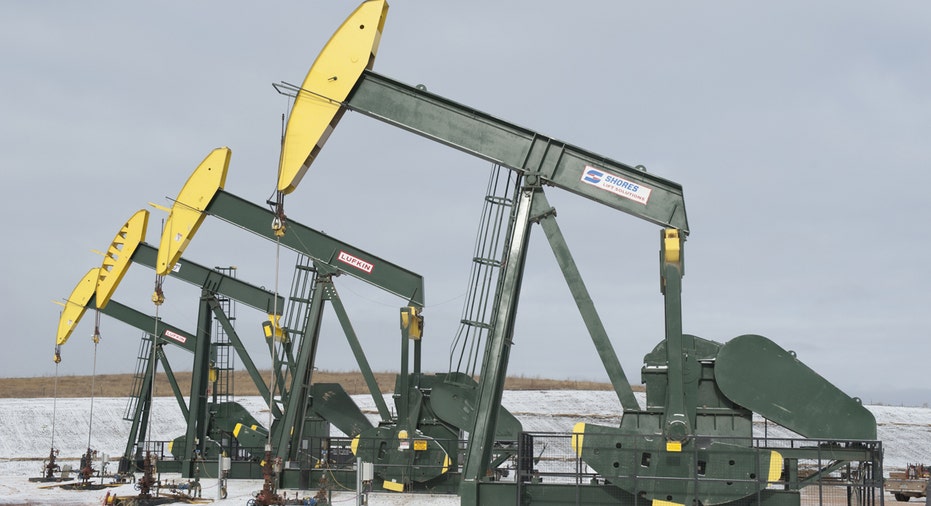Oil Prices Tumble Despite Decline in Stockpiles

Oil prices fell sharply Wednesday, erasing early gains that had come after data showed a draw in U.S. crude stockpiles.
The decline in prices was likely connected to a large glut still lingering around the globe and trading momentum that has been against oil for months, brokers and analysts said. Few had definitive answers, and explanations also included a shutdown at an Exxon Mobil Corp. refinery in Texas.
The move appeared counterintuitive because it came not long after the U.S. Energy Information Administration said crude stocks fell by 1.9 million barrels last week, compared with analysts' expectations for a 100,000-barrel draw.
But the draw was smaller than the 3.7-million-barrel decline reported by the American Petroleum Institute, which had helped lift prices since Tuesday night. Oil prices started their reversal within a half-hour of the EIA data release on Wednesday morning.
"The API let the cat out of the bag last night," said John Saucer, vice president of research and analysis at Mobius Risk Group in Houston. "In a way, [the EIA data was] anti-climatic."
Light, sweet crude for November delivery settled down $1.88, or 4.1%, at $44.48 a barrel on the New York Mercantile Exchange.
Brent, the global benchmark, settled down $1.33, or 2.7%, at $47.75 a barrel on ICE Futures Europe.
Futures had hit their highest intraday price in nearly a week just before the decline started. That made them primed for a drop, Mr. Saucer said.
Many day traders were betting on rising prices from falling inventories, and with the large glut still out there which has pushed oil prices down by more than 50% from 2014's highs, it made sense that many of those traders would restart the larger downward push, Mr. Saucer added.
The EIA data showed domestic crude inventories fell to 454 million barrels last week, from 456 million. Gasoline stockpiles grew by 1.4 million barrels, compared with analysts' expectations for a 1-million-barrel increase. Diesel supplies fell by 2.1 million barrels, compared with expectations for a 1.4 million-barrel addition.
Both markets followed crude higher and then lower. Gasoline futures settled down 3.48 cents, or 2.5%, at $1.3816 a gallon. Diesel futures fell 2.64 cents, or 1.7%, to $1.5056 a gallon.
Several brokers and analysts had expected gains would be limited by the large oversupply hanging over the global market. Peter Donovan, broker for Liquidity Energy in New York, had noted earlier that storage draws in the recent past have led to brief spikes that sputter quickly.
"There's bigger things out there than a weekly draw in domestic inventories," he said. "There's potential for new barrels to come on line in an already saturated market."
Downbeat data from China had already tempered gains earlier in the day. A measure of Chinese factory output in September fell to its lowest level since the financial crisis, the latest evidence of an economic slowdown in the world's second-biggest oil consumer.
While U.S. output has started to ease, many believe it is not enough to soak up a flood of oil coming from elsewhere. The latest Chinese data cast doubt on hopes that strong demand for crude will alleviate the global oversupply that has battered prices since last year.
The preliminary reading of Chinese manufacturing activity compiled by Caixin Media Co. and research firm Markit Ltd. fell to a six-and-a-half year low of 47.0 in September from a final reading of 47.3 in August. A reading above 50 indicates expansion from the previous month, while a reading below that indicates contraction.
"Yet another economic data point that suggests oil demand growth is not likely going to be the solution to the oversupplied global oil market," Dominick Chirichella, analyst at the Energy Management Institute, said in a note.
A surprise currency devaluation in China sent global markets into a tailspin in early August. Commodities were particularly hard hit, with U.S. oil prices falling below $40 a barrel last month for the first time since the financial crisis.
While most analysts expect prices to rise from here, there is less conviction about the strength of that recovery. A survey of 13 investment banks by The Wall Street Journal cut their average forecast for Brent crude, the international price gauge, by $9 to $58.70 a barrel, compared with last month's survey. Only three of the banks see Brent rising above $70 a barrel in 2016.
Jenny W. Hsu contributed to this article.
(By Timothy Puko and Georgi Kantchev)



















